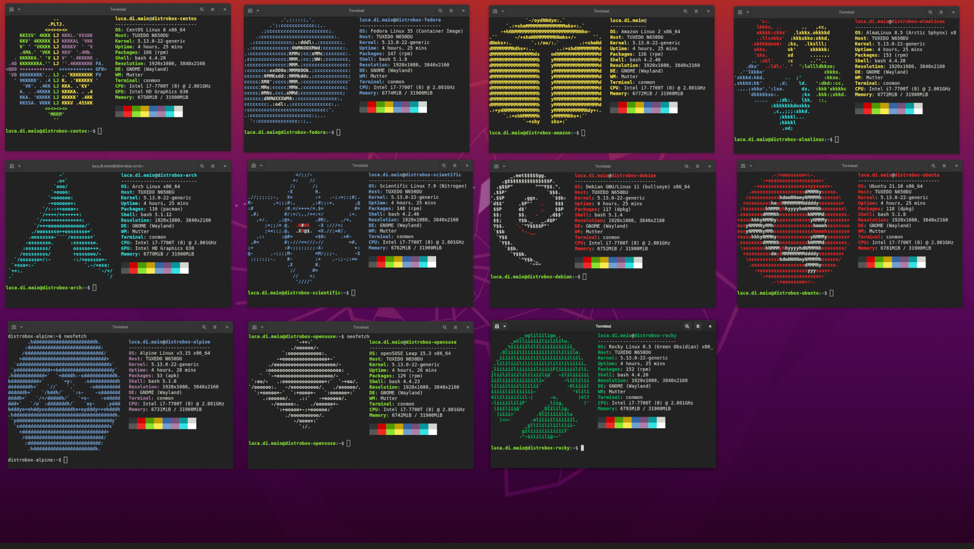
Introduction
Are you are a Linux user with multiple distributions but hates the hassle of constantly setting up new environments? Say hello to Distrobox, your solution for managing multiple Linux distros effortlessly. This tool allows you to interact with Linux instances with simple commands, changing the way users experience Linux.
What is Distrobox?
Distrobox is a powerful utility that leverages containerization to streamline the process of running Linux distributions alongside your primary OS. With Distrobox, you can create isolated, disposable environments for each distribution, ensuring a clean and consistent experience every time.
Key Features of Distrobox
- Effortless Distro Management: Create, use, and dispose of Linux distributions with simple commands.
- Isolated Environments: Each distro instance runs in an isolated container, ensuring that your primary system remains unaffected.
- Seamless Integration: Distrobox seamlessly integrates with your host system, providing access to your files, directories, and desktop environment.
- Lightweight and Efficient: Leveraging containerization technologies, Distrobox offers a lightweight and efficient solution minimizing system resource overhead.
- Cross-Platform Compatibility: Distrobox is compatible with various Linux distributions.
Getting Started with Distrobox
Installing Distrobox
First, before diving into Distrobox, ensure that your system meets the necessary requirements. The open source project relies on containerization technologies like Docker or Podman, as prerequisites.
Once installed and running, you can install Distrobox using your distribution’s package manager. Alternatively you can follow the instructions in the official repository.
Creating a New Distro Instance
Creating a new distro instance with Distrobox is as simple as running a single command. For example, to create an instance of Ubuntu 22.04, you can run:
This command will download the necessary components and create a new Ubuntu 22.04 instance named “ubuntu-2204”.
Entering and Exiting Distro Instances
To enter your newly created distro instance, simply run:
This will launch a new terminal session within the Ubuntu 22.04 environment. From here, you can interact with the distro as you would with any other Linux system, installing packages, running applications, and more.
To exit the distro instance and return to your host system, simply type exit in the terminal.
Advanced Usage
While the basic functionality of Distrobox is incredibly straightforward, it offers a wealth of advanced features and customization options for power users.
Managing Distro Instances
Distrobox provides a range of commands for managing your distro instances, including listing, stopping, and deleting instances. For example, to list all available instances, you can run:
To stop or delete an instance, use the following commands:
Sharing Files and Directories
One of the key advantages of Distrobox is its ability to seamlessly share files and directories between your host system and distro instances. By default, Distrobox shares your home directory, allowing you to access your files from within the distro instance.
However, you can also selectively share additional directories or files using the –share option when creating or entering an instance:
Integrating with Your Desktop Environment
Distrobox offers excellent integration with popular desktop environments like GNOME, KDE, and others. This integration allows you to launch applications from your distro instances directly from your host system’s desktop, providing a seamless and unified experience.
To enable desktop integration, you can use the –desktop option when entering an instance:
This configures the necessary components to ensure that applications launched from the distro instance work within your host environment.
Why Use Distrobox?
The open source software offers numerous benefits that make it an attractive choice for Linux enthusiasts and developers alike:
- Distro Exploration: With Distrobox, you can easily try out different Linux distributions without the need for dual-booting or virtual machines. This allows the user to explore and find their perfect distro.
- Isolated Development Environments: Developers can create isolated environments for each project, ensuring that dependencies and configurations don’t conflict with other projects or their host system.
- Reproducible Setups: By encapsulating entire distro instances, Distrobox enables reproducible and consistent setups. This makes it easier to collaborate with others or replicate specific environments.
- Resource Efficiency: Compared to traditional virtual machines, Distrobox offers a lightweight and efficient solution. This minimizes the overhead on your system’s resources.
- Simplified Cleanup: When you’re done with a distro instance, simply delete it, and all associated files and configurations are automatically removed, keeping your system clean and organized.
Distrobox vs. Virtual Machines
While virtual machines have been a popular solution for running multiple operating systems on a single host, Distrobox offers several advantages over traditional virtualization:
- Lightweight and Efficient: Distrobox leverages containerization technologies, which are generally more lightweight and efficient than full-blown virtual machines, resulting in lower resource overhead.
- Seamless Integration: Distrobox seamlessly integrates with your host system, allowing for easy file sharing, desktop integration, and a consistent user experience.
- Faster Setup and Teardown: Creating, starting, and stopping distro instances with Distrobox is significantly faster compared to virtual machines. This allows a more agile and streamlined workflow.
- Simplified Management: Distrobox provides a simple and intuitive command-line interface for managing distro instances, making it easier to create, use, and dispose of environments as needed.
However, it’s important to note that virtual machines still have their place, particularly when running applications or services that require direct access to hardware resources or specific system configurations that containerization cannot provide.
Community and Support
Distrobox is an open-source project with an active and growing community. The official repository on GitHub is the central hub for accessing the latest updates, reporting issues, and contributing to the project.
Additionally, there are various forums and communities you can seek help, share tips, and engage with other users and contributors.
To summarize Distrobox is a game-changer for Linux enthusiasts and developers who wan an efficient and easy to use distro manager. Its simple yet powerful approach to containerization streamlines the process of managing distro instances.
Related Articles
Distrobox: Try Multiple Linux Distributions via the Terminal
Declaring your own personal distro boxes
Related Articles from Unixmen
Void Linux: A Review of a Fast and Lightweight Distro
The Simple, Fast, And Lightweight Linux Distro for Beginners





